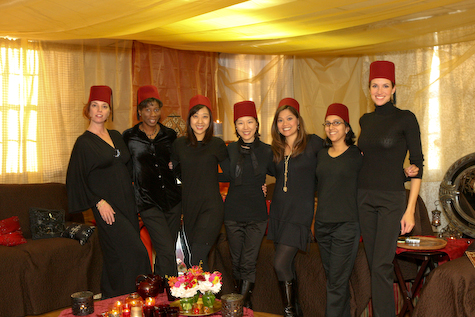Understand Children’s Real Needs …
Thursday, October 14th, 2010A Montessori quick bite from The Center for Guided Montessori Studies
“Often what we call naughtiness on the part of the individual child is rebellion against our own mistakes in educating him. The coercive means which we adopt toward children are what destroy their natural tranquility. A healthy child, in his moments of freedom, succeeds in escaping from the toys inflicted upon him by his parents, and in securing some object which arouses the investigating instinct of his mind; a worm, an insect, some pebbles, etc.; he is silent, tranquil and attentive. If the child is not well, or if his mother obliges him to remain seated in a chair, playing with a doll, he becomes restless, cries, or gives way to convulsive outbursts (“bad temper”). The mother believes that educating her child means forcing him to do what is pleasing to her, however far she may be from knowing what the child’s real needs are, and unfortunately we must make the same statement regarding the school-teachers!”
— Dr. Maria Montessori, Pedagogical Anthropology, page 443
Fathers had little role in child care when Dr. Montessori wrote the passage above, but if we substitute “parent” for mother, the quote still applies. In the last century a liberation of gender has swept through western civilization. Though incomplete, this wave of liberation has swept much faster and further than a similar liberation for childhood.
Scientific evidence has long since demonstrated the ineffectiveness of authoritarian treatment of children. Chillingly, some parents and most traditional schools still persist in labeling children “good” or “bad” based on their ability to passively accept arbitrary constraints and to parrot back facts and dogma placed in front of them. Many educators treat children as potential criminals who need to be forcibly “civilized”.
As Montessorians, we uncategorically reject this notion. A child’s behavior communicates his or her needs clearly to those who listen. One child may break her toys in order to learn how they work inside. Another may get dirty while exploring the mysteries of nature. A boy may chatter in class because he is unengaged by the work, or because he is simply hungry for social interaction. Consider that social intelligence, like all other kinds, also needs stimulation in order to develop.
Is there a disruptive child in your classrooms? Many well-meaning and thoughtful people have suggested that Montessori is not for all children. Others, both idealistic and with great depth of classroom experience, suggest the opposite, that the Montessori classroom is the ideal environment for every youth, and perhaps adult learners as well!
We would rather not paint with too broad a brush. Instead, we wouldsuggest that at least many of these more “difficult” children may be able to find a wonderful place within your classrooms. The key is for teacher and parents collaborate to discover – and unlock! – the key of the child’s interest.
Thoughts for the day:
Think back onto your own childhood. If you weren’t lucky enough to be in a Montessori classroom yourself, can you remember times that you misbehaved, or were judged to be “misbehaving?” What happened? Were you being purposefully troublesome, or was there some need of yours that was unmet? How can we become more tuned in to the children? How
can we better understand what their behavior is communicating and sobetter support them in meeting their unmet needs?





